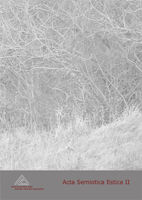Maarahva pühade puude ja puistutega seotud käitumisnormid
Behavioural Norms Related to Sacred Trees and Groves of Native Estonians
Author(s): Auli KüttSubject(s): Semiotics / Semiology
Published by: Eesti Semiootika Selts
Keywords: sacred groves; sacred trees; native Estonians; sacred places; customs; behavioural norms (behaviour; norms); landscaping (landscape architecture)
Summary/Abstract: This article focuses on the traditional behaviour of native Estonians as related to natural sacred places, in particular sacred trees and groves. The material used for research is composed mainly of folkloric archive texts written down during 1870-1970. In the present paper, "sacred place" is used as a term to refer to natural places (such as hills, forests, lakes) and to natural or human-made objects (e.g., tree, stone, fence, rains) that folkloric material refers to as "sacred" or with which sacral behaviour (e.g., praying, sacrificing) can be associated. This article focuses on sacred places the central object of which is a tree or a bush or a group of these (grove). Traditionally, human influence on sacred places has been kept to a minimum. Many kinds of interfering activities are forbidden completely (e.g., cutting down a tree, breaking a twig). In some places it is forbidden to pick up fallen twigs; in other places it is allowed, but the natural residue has to be burnt on the spot. Domestic animals are not allowed to enter a sacred place, and therefore such places have often been surrounded by a fence. Ploughing and digging are not allowed as well. In general, no agricultural activities are allowed in sacred places. The sacredness of the place extends also to the ground. If the flora has for some reason been destroyed, the place is still considered sacred and it is not allowed to carry out any agricultural activities there. It can be concluded that Estonia's sacred groves have never been a place for agricultural activity, neither have they been shaped or re-shaped according to landscaping rules. Sacred groves are rather similar to virgin forests, except for minimal human influence.
Journal: Acta Semiotica Estica
- Issue Year: 2005
- Issue No: 2
- Page Range: 153-168
- Page Count: 16
- Language: Estonian

